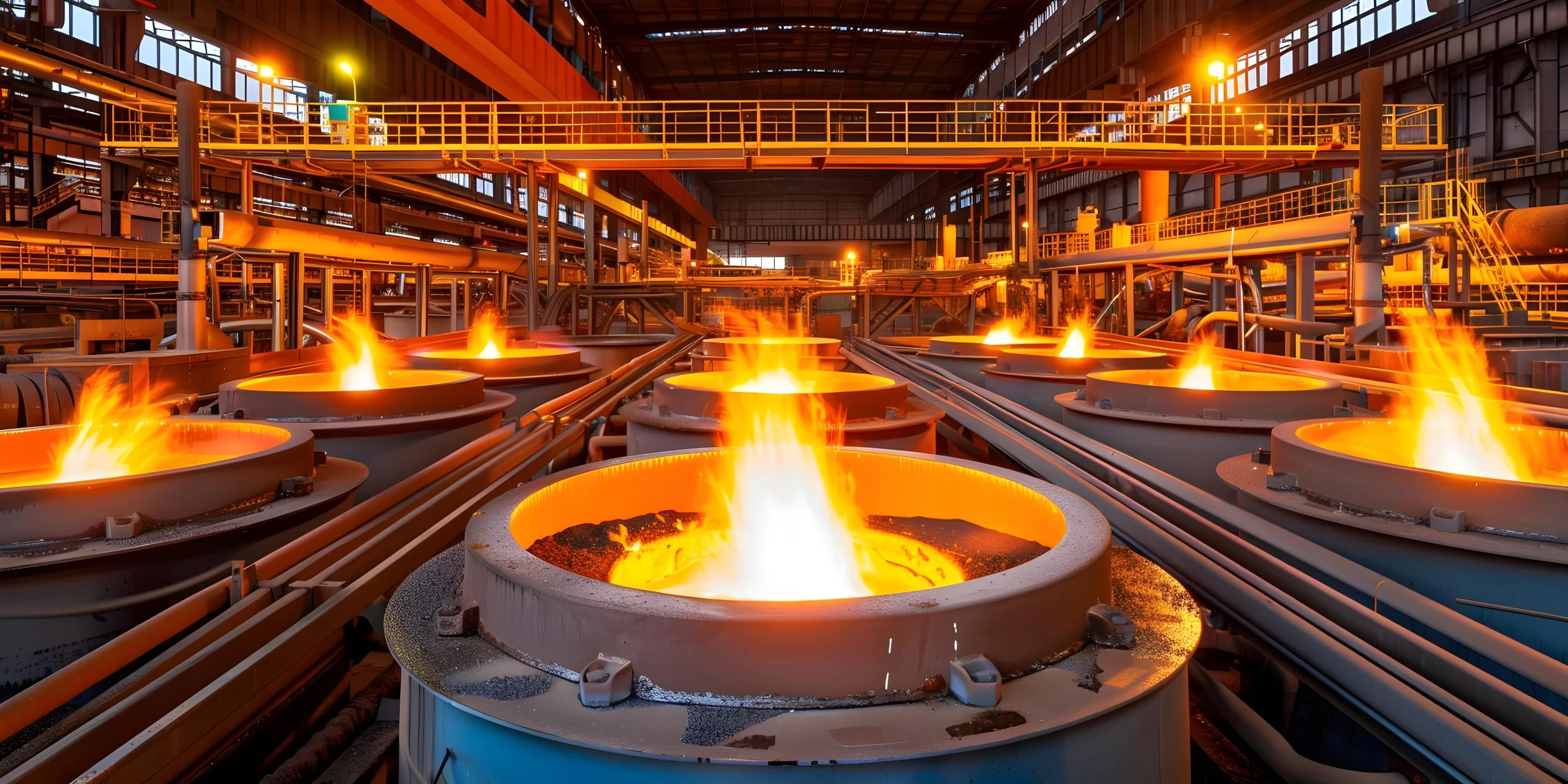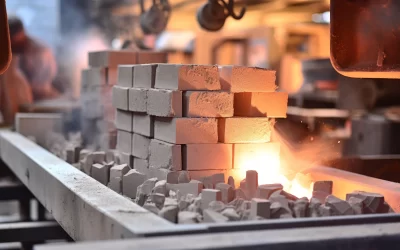Have you ever wondered how high-temperature industrial processes like steel manufacturing and glassmaking are possible without damaging the equipment and endangering workers? The secret lies in the use of refractory materials. These materials are designed to withstand extreme temperatures and harsh chemical environments, making them essential for a range of industrial applications.
But what exactly are refractory materials? What types are there, and what benefits do they offer? In this blog, we’ll explore the world of refractory materials and discover their importance in modern industry. Get ready to delve into the fascinating world of heat-resistant materials!
What are Refractory Materials?
There are always some unsung heroes behind the industrial sector and luckily refractory materials are the pillar. Whether it is the glass industry or the steel and iron industry, the refractory industry, which manufactures high-quality refractory materials, is a major support system. In fact, refractory materials have made our life easy, such types of refractory materials have played a vital role in our lives.
However, refractory materials are widely used in various industrial applications. The materials used to line furnaces, kilns, and reactors in sectors like steel production, ceramics, and cement manufacturing are known as refractories. These industries couldn’t function at the high temperatures required to make their products without them. High melting points, good thermal insulation, and chemical resistance are all features that are built into them.
Moreover, manufacturers of refractory materials have years of expertise in serving different types of refractory materials. In spite of this, every type of refractory material has its pros & cons. In order to help you know more about the types of refractory materials and their benefits, continuing reading can be advantageous for you all.
What are the Types of Refractory Materials?
There are several types of refractory materials, each with unique properties and benefits. Let’s take a closer look at some of the most common types of refractory materials.
Fireclay Refractories:

Fireclay refractories are made from a mixture of clay and other materials, such as graphite and aluminum oxide. They are known for their excellent thermal shock resistance, making them ideal for applications where rapid temperature changes are common.
Benefits of fireclay refractories include:
-High strength at high temperatures
-Good resistance to corrosion
-Easy to shape and install
Silica Refractories
Silica refractories are made from a high-purity form of silica, known as quartz. They are known for their excellent resistance to acid and alkali environments, making them ideal for use in chemical processing plants.
Benefits of silica refractories include:
-High thermal conductivity
-Excellent resistance to thermal shock
-Good mechanical strength
Magnesite Refractories
Magnesite refractories are made from magnesium oxide and are known for their high refractoriness (ability to withstand high temperatures). They are commonly used in steelmaking and other high-temperature applications.
Benefits of magnesite refractories include:
-High resistance to basic environments
-Excellent thermal shock resistance
-High compressive strength
Alumina Refractories
Alumina refractories are made from aluminum oxide and are known for their high resistance to abrasion and corrosion. They are commonly used in applications where high temperatures and harsh chemical environments are present.
Benefits of alumina refractories include:
-High mechanical strength
-Good resistance to thermal shock
-Excellent resistance to wear and erosion
Chrome Refractories
Chrome refractories are made from chrome oxide and are known for their high resistance to corrosion and abrasion. They are commonly used in applications where high temperatures and harsh chemical environments are present.
Benefits of chrome refractories include:
-High refractoriness
-Excellent resistance to thermal shock
-Good resistance to wear and erosion
Conclusion
In conclusion, refractory materials play a crucial role in modern industry, and understanding the different types of refractory materials and their benefits is essential for selecting the right material for a specific application. By choosing the right refractory material, industries can ensure their equipment and workers are protected from the extreme temperatures and harsh environments present in many industrial processes.
So if you are one of those looking for quality refractory materials or refractory bricks, Ganeshas got you covered. Ganeshas– is one of the leading manufacturers of refractory materials, having years of experience in meeting the industry’s needs by offering the best refractory materials and mechanical products. Contact our team for further details.




